Previously, you saw my first real attempt at lunar photography. It looked pretty good! It gave me confidence that the lens used would be so useful for so many photographic situations. Turns out this is not the case. Since I’m mounting it to a micro four thirds camera, the 500mm f8 lens turns into, effectively, 1000mm. I’ll go over this a little more when I discuss the Lumix G7 in a later post. I don’t know if you’ve ever had the chance to try out a lens with that tight of view, but under the standard rule of thumb, you would have to have a shutter speed of 1/1000s in order to get a handheld shot and with a maximum aperture of f8, that is a fairly rare occurrence. This lens is at home on a tripod.
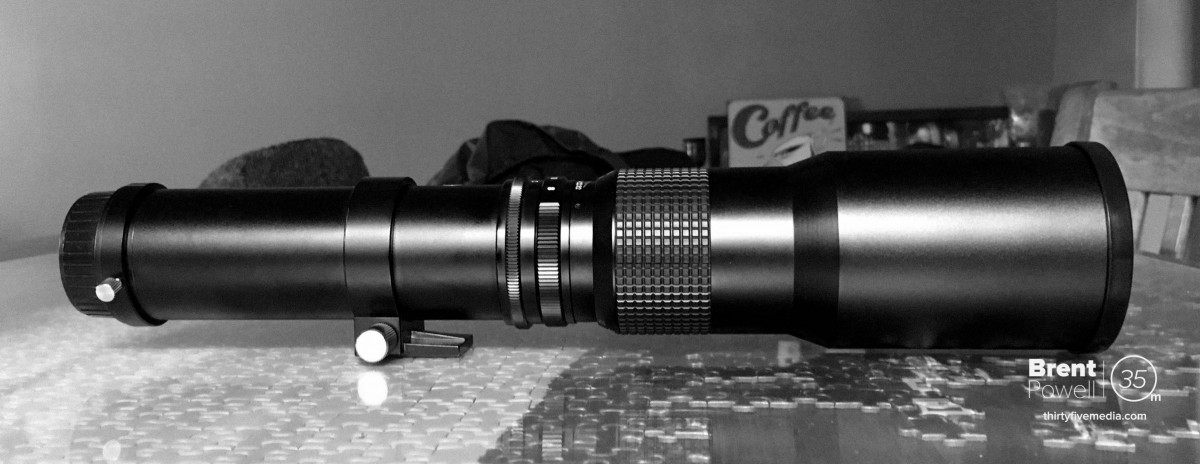
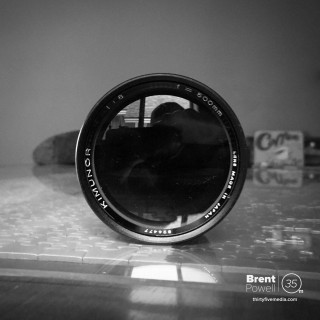 Once mounted on a tripod, it’s still hard to focus the lens on terrestrial objects and you can forget about anything closer than about 100 meters, it just isn’t sharp enough to give you any quality detail. Even beyond that distance, focus is a bit frustrating. It really requires you to mount it on a solid tripod. I have yet to do so, but a fluid-head video tripod would probably be best. You focus, then let the camera rest, waiting for it to stop shaking then refocus again and again until you reach your desired focus.
Once mounted on a tripod, it’s still hard to focus the lens on terrestrial objects and you can forget about anything closer than about 100 meters, it just isn’t sharp enough to give you any quality detail. Even beyond that distance, focus is a bit frustrating. It really requires you to mount it on a solid tripod. I have yet to do so, but a fluid-head video tripod would probably be best. You focus, then let the camera rest, waiting for it to stop shaking then refocus again and again until you reach your desired focus.
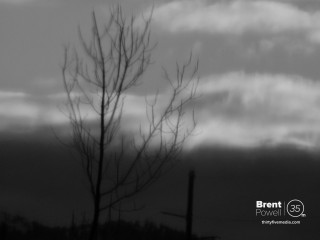
To be honest, I’ve still had more misses than hits with this lens, but that’s all part of the experience when you mount vintage glass via an adaptor to a modern camera. Some of the other lens that I’ve adapted in the same way are even worse, if not completely unusable, while others have yielded splendid results. I’ll probably cover those later, but let’s get back to the lens at hand.
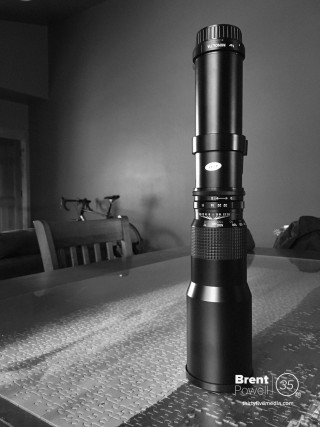 Now this post has mostly been slamming this lens for being impractical, but let’s face it, even a good version of this lens that would mount up to my DSLR (even one that costs several thousand dollars), would still be impractical for everyday use. But they do have their uses, and this one maybe less than the modern, stabilized, light swallowing monsters that you see lining the sidelines at sporting events, or along the roads of our national parks, trying to snap a picture of a little birdie (while everyone using the full extents of their human vision are more concerned with the grizzly bear sizing up their next, distracted, meal). But this lens does do one thing well, and that is take images of the moon.
Now this post has mostly been slamming this lens for being impractical, but let’s face it, even a good version of this lens that would mount up to my DSLR (even one that costs several thousand dollars), would still be impractical for everyday use. But they do have their uses, and this one maybe less than the modern, stabilized, light swallowing monsters that you see lining the sidelines at sporting events, or along the roads of our national parks, trying to snap a picture of a little birdie (while everyone using the full extents of their human vision are more concerned with the grizzly bear sizing up their next, distracted, meal). But this lens does do one thing well, and that is take images of the moon.
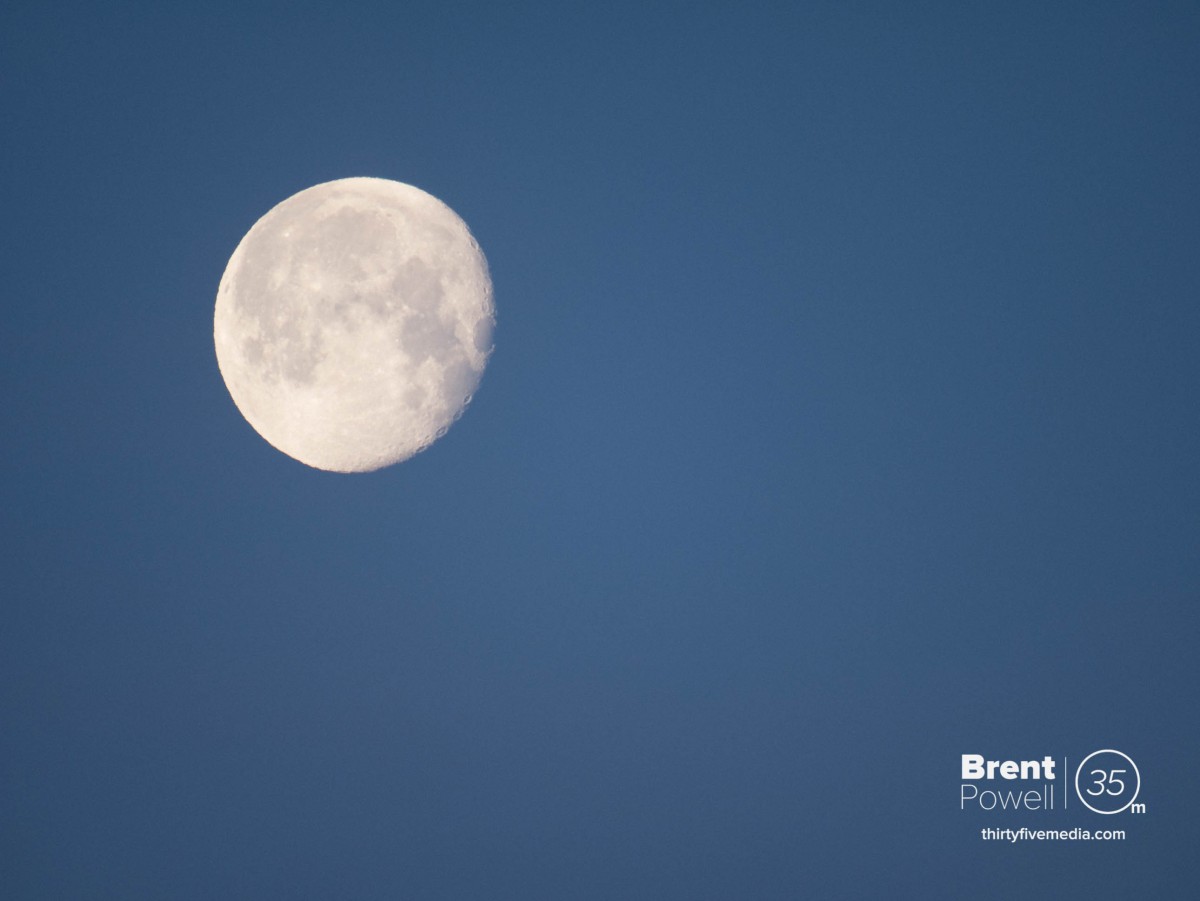
Several mornings back, as the moon was setting in the west behind a bank of fluffy clouds. The sun was rising in the east, coloring the clouds in beautiful shades of purple, pink and orange. I’m not usually one for tracking down a shot. Being in Montana, you just don’t have to try all that hard to get a good image, but on this morning I decided to try. It was cold, but I set up the camera on the tripod, took some test shots and realized that I still had about 15 minutes until the moon would drop into the bank of clouds. Fortunately the view was from the porch, so I took everything back inside, only to come back out several minutes later to set back up.
The moon looks like a slow moving object when you stare at it, but within the lens’ view, it was moving, requiring me to reposition the camera several times to get the frame I wanted. I would actually set the view up in anticipation for the composition that I was looking for, then wait for the moon to come down into position. Because every time I touched to camera, the lens would bounce for a few seconds, I used the 10 second self timer to ensure the camera/lens was still for the exposure.
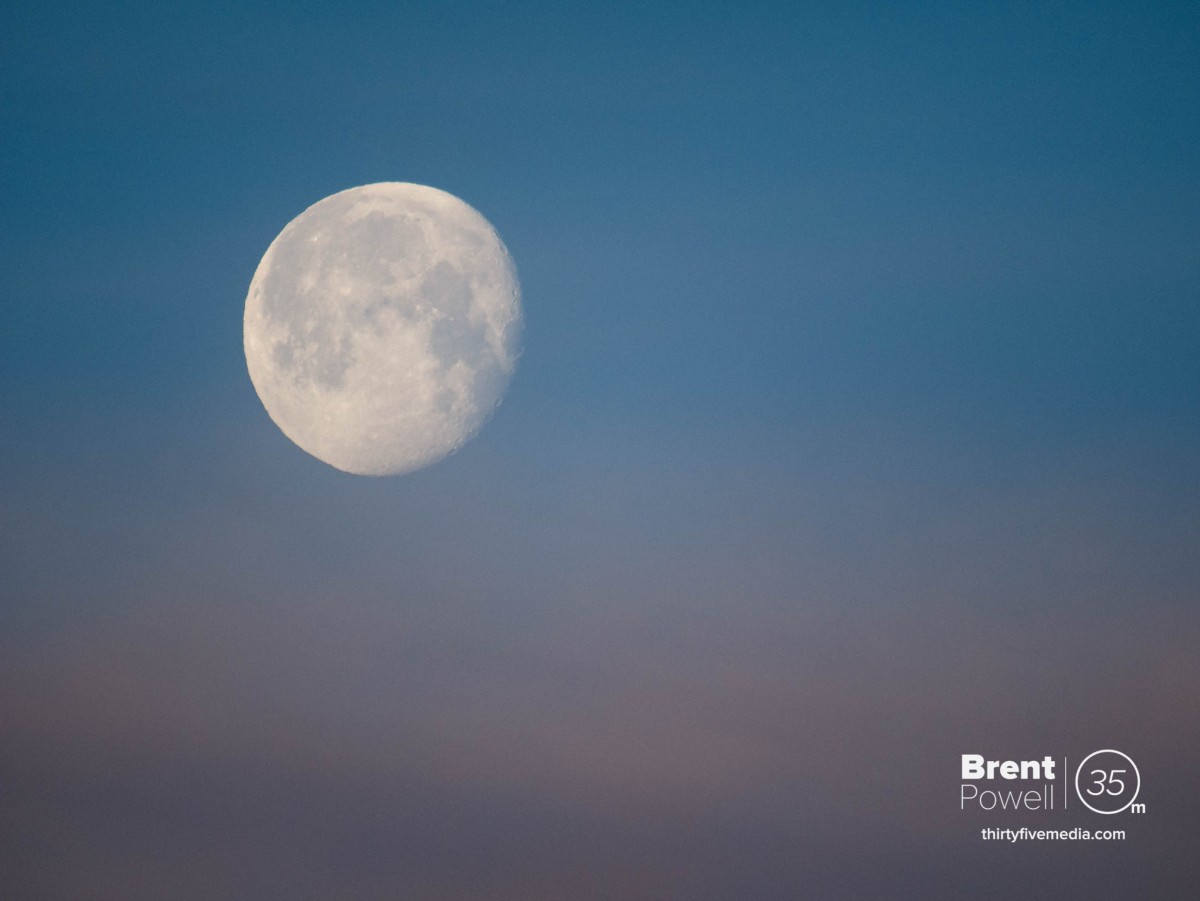 Minutes later, I collected my things and went back inside to import and process my images. My process in editing my pictures rely on one key thing, I want the processed file to look like what I saw, or at least, what I remembered seeing. This puts a bit of subjectivity into my work. Now from time to time I do deviate and go for a specific tonal look. You’ll see that in my portraiture. But for most landscapes, I try to make the image look like my memory, which probably tends to be a bit more dramatic. As I imported the image and previewed in on my computer’s screen, it was a bit lackluster. Since I shoot in RAW, I don’t typically set my white balance for photography and leave the camera on auto, this yielded a an image where the clouds were being selected as the white point, which took most of the saturation out of the image. Also, the contrast of the moon was weak. So I set to work, tweaking those two things and cropping the image down to a more pleasing view. I also worked on a couple of the other images that looked promising, but I tend to pick just a couple photos to work on out of any batch. And here it is…
Minutes later, I collected my things and went back inside to import and process my images. My process in editing my pictures rely on one key thing, I want the processed file to look like what I saw, or at least, what I remembered seeing. This puts a bit of subjectivity into my work. Now from time to time I do deviate and go for a specific tonal look. You’ll see that in my portraiture. But for most landscapes, I try to make the image look like my memory, which probably tends to be a bit more dramatic. As I imported the image and previewed in on my computer’s screen, it was a bit lackluster. Since I shoot in RAW, I don’t typically set my white balance for photography and leave the camera on auto, this yielded a an image where the clouds were being selected as the white point, which took most of the saturation out of the image. Also, the contrast of the moon was weak. So I set to work, tweaking those two things and cropping the image down to a more pleasing view. I also worked on a couple of the other images that looked promising, but I tend to pick just a couple photos to work on out of any batch. And here it is…

And here is a before and after slider so you can see the difference. All the color detail was in the photo, just muted by the camera initially and brought back via Adobe Lightroom.
(use the slider to view the original vs. the edited, final version)
[twentytwenty]
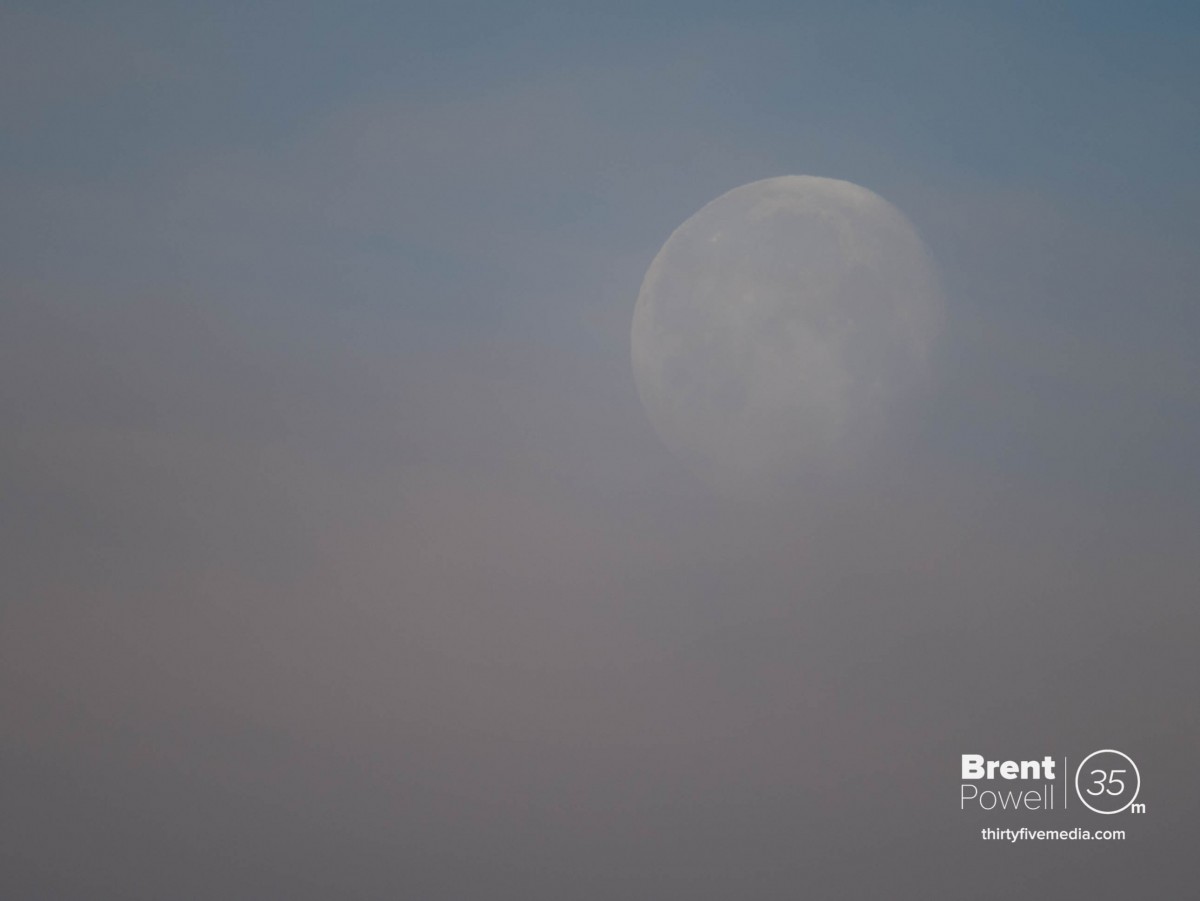

[/twentytwenty]
And so there it is, this lens can capture stunning images of the moon, but not much else. I’m sure I’ll use it again, maybe find some other random use for it occasionally, but it will go back in it’s pouch, nestled away in my closet. You might think I have an air of disappointment in in these final lines, which is somewhat true, but I’m happy to be able to capture images previously out of my reach.
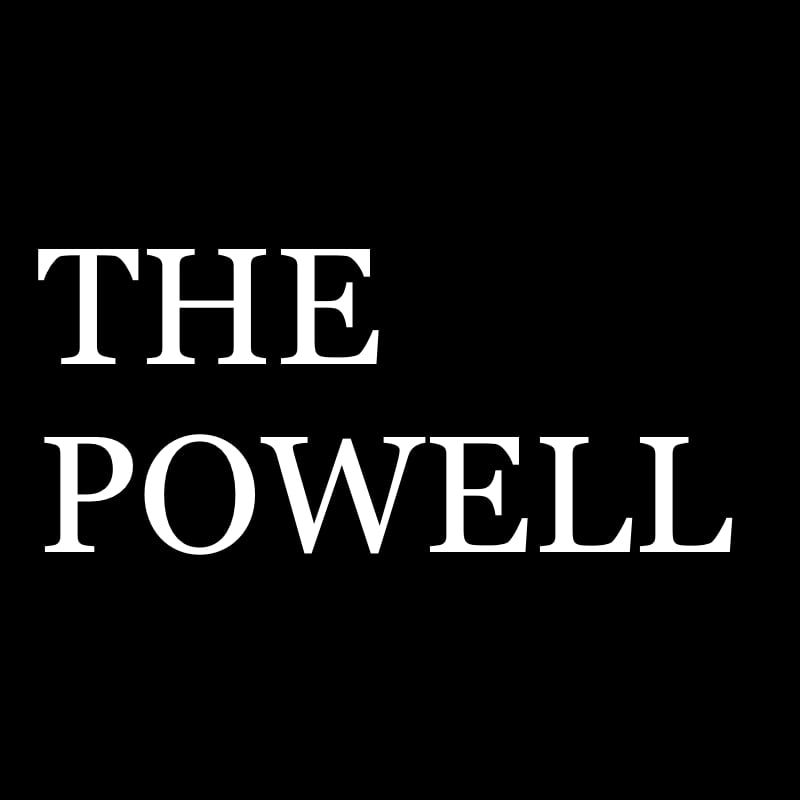
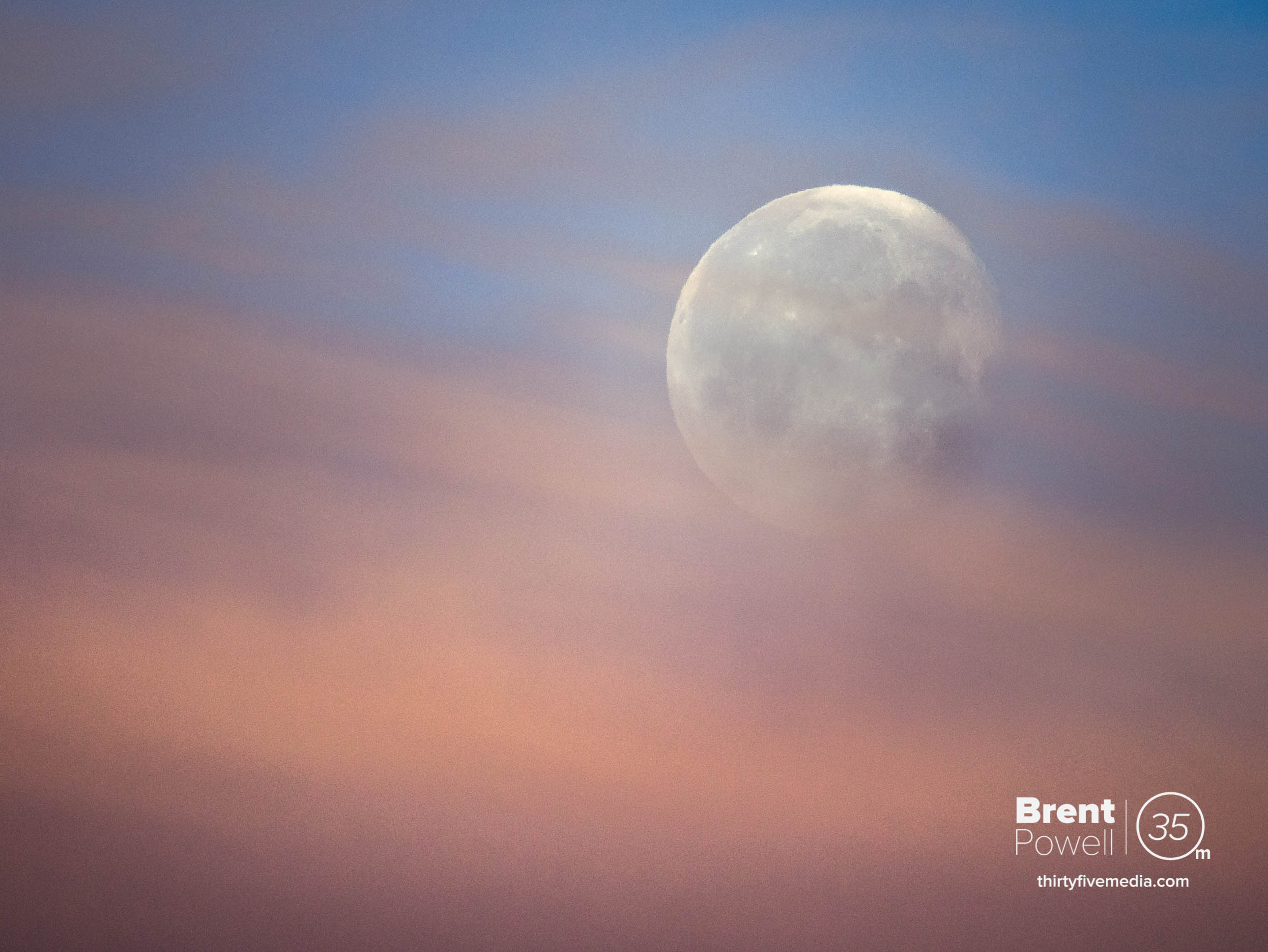
You must be logged in to post a comment.